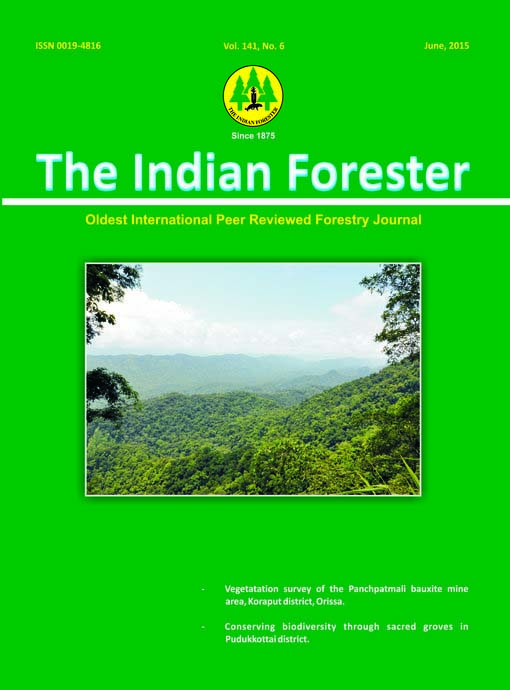Conserving Biodiversity through Sacred Groves in Pudukkottai District
DOI:
https://doi.org/10.36808/if/2015/v141i6/71312Keywords:
Sacred Groves, Biodiversity, Conservation, Ecosystem Services.Abstract
Pudukkottai is a small district which had a lot of rich forests earlier. Later, all these thick forests were cleared for eucalyptus plantation to feed the paper and rayon factories. Much of the biodiversity has been lost due to the monoculture of eucalyptus. There a quite a few sacred groves in this district which still harbour a substantial number of the native flora and fauna and continue to offer the ecosystem services. But many of them are slowly getting degraded due to human intrusion, cattle grazing and invasion by exotic species like Prosopsis. Conservation of these sacred groves will help in conserving biodiversity and also restore the valuable ecosystem services. Conservation measures should aim to improve the conservation status of the existing sacred groves and to replicate these in other areas available for plantation.References
Anane M. (1997). Religion and conservation in Ghana. In: Leyla Alvanak and Adrienne Cruz(eds.). Implementing Agenda 21: NGO experiences from around the world. United Nations Non-Governmental Liaison service, Geneva. pp.99-107.
Chandran M.D.S., Gadgil M. and Hughes J.D. (1998). Sacred groves of the Western Ghats of India. In: Conserving the sacred for Biodiversity management. (Ramakrishnan, P.S., Saxena, K.G. and Chandrasekhara, V.M. eds.) Oxford and IBH publishing Co. Pvt. Ltd.pp.211-231.
FSI (2011). Forest Survery of India, Dehradun. Pp. 221. (http://fsi.org.in/cover_2011/tamilnadu.pdf)
Gadgil M. and Vartak V.D. (1976). The sacred groves of the Western Ghats in India. Economic Botany, 30: 152-160.
Hughes J.D. (1998). Sacred groves of the Ancient Mediterranean area: Early conservation of biological diversity. In: Conserving the sacred for Biodiversity management. (Ramakrishnan, P.S., Saxena, K.G. and Chandrasekhara, V.M. eds.) Oxford and IBH publishing Co. Pvt. Ltd.pp. 101-121.
King Ez.D.I.O., Narasimhan D. and Chitra Viji (1996). Sacred groves: traditional ecological heritage. In: Proceedings of First Indian Ecology congress. National Institute of Ecology, New Delhi.
Nanditha Krishna and Javanthi Prabhakaran (eds.) (1997). The ecological traditions of TamilNadu. C.P.R. Environmental Education centre, Chennai.
Ramakrishnan P.S. (1996). Conserving the Sacred: From species to Landscapes. Nature and Resources, UNESCO, 32: 11-19.
Rodgers W.A. (1994). The sacred groves of Meghalaya. Man in India, 74: 339-348.
Schaaf T. (1998). Sacred groves in Ghana. Experiences from an Integrated study project. In: Conserving the sacred for Biodiversity management. (Ramakrishnan, P.S., Saxena, K.G. and Chandrasekhara, V.M. eds.). Oxford and IBH publishing Co. Pvt. Ltd. pp, 145-150.
Sethi P. (1993). Phytosociology of a tropical dry evergreen forest patch in the Puthupet sacred grove, Coramandel coast, Tamil Nadu, M.Sc.Thesis, Pondichery university, Pondichery.
Visalakshi N. (1995). Vegetation analysis of two tropical dry evergreen forests in Southern India. Tropical Ecology, 36: 117-127.
Downloads
Downloads
Published
How to Cite
Issue
Section
License
Unless otherwise stated, copyright or similar rights in all materials presented on the site, including graphical images, are owned by Indian Forester.





